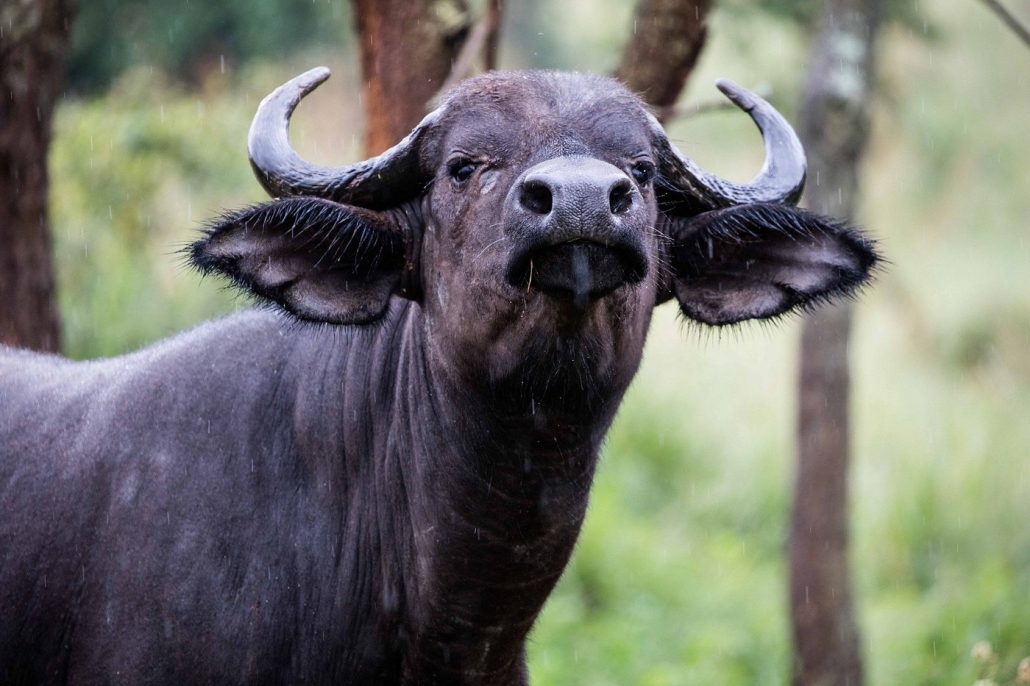Akagera National Park: A Comprehensive Guide to Rwanda’s Big Five Safari Destination
Located in the northeastern part of Rwanda, Akagera National Park is a stunning protected area known for its diverse landscapes, rich wildlife, and status as the only park in Rwanda where visitors can experience the “Big Five” game animals—elephants, lions, leopards, rhinoceroses, and buffaloes. Spanning an area of about 1,200 square kilometers, Akagera is named after the Kagera River, which flows along the eastern border, forming a natural boundary between Rwanda and Tanzania.

Akagera National Park stands out as a unique destination, offering a remarkable blend of savannah, woodland, wetland, and lakes, unlike Rwanda’s more famous montane forests such as Volcanoes National Park or Nyungwe Forest National Park. This guide explores Akagera’s history, attractions, wildlife, conservation efforts, and tips for visiting, providing a comprehensive overview of this remarkable park.
History of Akagera National Park
Akagera National Park was established in 1934 to protect its animals and landscapes from over exploitation. The park once covered an area of nearly 2,500 square kilometers, but over the years, its size was reduced due to human encroachment and resettlement efforts, particularly after the 1994 Rwandan genocide. The genocide led to a huge influx of people seeking land for agriculture, significantly reducing the park’s territory.
In the early 2000s, Akagera faced additional challenges from poaching, habitat loss, and uncontrolled grazing, which severely affected its wildlife populations. However, in 2010, the Rwandan government partnered with the non-profit African Parks to manage and rehabilitate Akagera. Since then, concerted efforts have been made to restore the park, reintroduce key species like lions and rhinos, and significantly improve security measures to combat poaching. Today, Akagera is a conservation success story and an essential part of Rwanda’s tourism portfolio.
Wildlife in Akagera National Park
Akagera National Park is now one of the most significant conservation areas in Rwanda, offering a quintessential African safari experience. The park’s ecosystems include savannah plains, swamps, lakes, and woodlands, creating a habitat for a variety of wildlife species.
The Big Five
One of Akagera’s primary attractions is its Big Five game animals:
- Elephants: Akagera is home to a healthy population of African elephants, with herds often seen near lakes and marshy areas, especially during the dry season when water sources become scarce.
- Lions: Lions were reintroduced to Akagera in 2015 after having been wiped out due to poaching and human-wildlife conflict in the late 1990s. Since their reintroduction, the population has been steadily growing, and visitors now have a good chance of seeing these apex predators in the park.
- Leopards: Though leopards are present in the park, they are notoriously elusive and primarily nocturnal. Lucky visitors may spot them during early morning game drives or night safaris.
- Rhinoceroses: Both black and white rhinos have been reintroduced to Akagera. Black rhinos, which were wiped out during the poaching crisis in the 1980s, were reintroduced in 2017, and in 2019, white rhinos were also reintroduced to help bolster the park’s conservation efforts.
- Buffaloes: African buffaloes are commonly seen in Akagera, grazing in the savannah grasslands or wallowing near the park’s water bodies.
Other Mammals
In addition to the Big Five, Akagera boasts a wide variety of other mammals, including:
- Giraffes: The park is home to a population of Masai giraffes, which were reintroduced in the 1980s. These elegant animals are commonly seen browsing on acacia trees in the savannah.
- Zebras: Akagera’s plains are dotted with herds of plains zebras, which are often seen grazing alongside other herbivores like antelope and buffalo.
- Antelopes: Various species of antelope inhabit the park, including the strikingly large eland, topi, impala, bushbuck, and the water-loving sitatunga.
- Hippos and Crocodiles: Akagera’s numerous lakes, including Lake Ihema and Lake Rwanyakazinga, are teeming with hippos and crocodiles. Hippos are often spotted basking in the sun or cooling off in the water during the day, while crocodiles can be seen lurking near the shores.
Birdlife
Akagera is a birdwatcher’s paradise, with over 480 bird species recorded in the park. Some of the key bird species include:
- Shoebill stork: This rare and prehistoric-looking bird can sometimes be spotted in the park’s wetlands, although it remains elusive.
- African fish eagle: Known for its iconic call, the African fish eagle is commonly seen near the park’s lakes, hunting for fish.
- Papyrus gonolek: A brightly colored bird often found in the papyrus swamps along the shores of Akagera’s lakes.
- Grey-crowned crane: This stunning bird, which is also the national bird of Uganda, can be seen strutting across the savannah in small flocks.
Other notable species include the lilac-breasted roller, Ross’s turaco, and various species of kingfishers, herons, and egrets.
Best Places to Visit in Akagera National Park
Akagera National Park offers a variety of landscapes and attractions, making it a rewarding destination for those seeking a diverse safari experience. Some of the top places to visit within the park include:
Lake Ihema
Lake Ihema is the second-largest lake in Rwanda and one of the most scenic spots in Akagera. It’s known for its large populations of hippos and crocodiles and is a popular spot for boat safaris. The lake is also a birdwatcher’s haven, with numerous waterbird species inhabiting its shores, including pelicans, cormorants, and African jacanas.
Mutumba Hills
The Mutumba Hills offer breathtaking panoramic views of Akagera’s rolling savannahs and lakes. From this vantage point, visitors can observe herds of wildlife moving across the plains below, making it an ideal spot for photography and scenic drives.
Kilala Plains
These open savannah plains are one of the best places in Akagera to spot wildlife, especially large herbivores like zebras, giraffes, and buffaloes. The plains provide excellent opportunities for game drives and wildlife viewing.
Lake Rwanyakazinga
Lake Rwanyakazinga is another key water body in Akagera, known for its scenic beauty and abundant wildlife. Boat safaris on the lake offer visitors the chance to get up close to hippos, crocodiles, and birdlife while enjoying the tranquility of the park’s wetlands.
Best Time to Visit Akagera National Park
Akagera National Park is open year-round, but the best time to visit depends on the type of wildlife viewing experience you’re seeking. The park experiences two main seasons: the dry season and the wet season.
Dry Season: June to September
The dry season is the most popular time to visit Akagera National Park, especially for wildlife viewing. During this period, water sources become scarce, causing animals to congregate around the park’s lakes and rivers. This makes it easier to spot large mammals like elephants, buffaloes, and antelope. The dry season also offers cooler temperatures and less chance of rain, making it ideal for game drives and other outdoor activities.
Wet Season: October to May
The wet season is characterized by heavier rainfall, particularly from March to May, with shorter showers in October and November. While the rain can make some roads more challenging to navigate, the wet season brings the park to life. The vegetation becomes lush and green, and it’s a great time for bird watching, as many migratory species arrive. Additionally, this is the best time to spot newborn animals, as many species give birth during the rainy season.
Activities in Akagera National Park
Akagera National Park offers a range of activities for visitors, allowing them to explore the park’s diverse landscapes and wildlife.
Game Drives
Game drives are the most popular way to explore Akagera National Park. Visitors can embark on guided game drives or self-drive safaris, following a network of roads that wind through the park’s different ecosystems. Morning and late afternoon game drives offer the best chances of seeing wildlife, especially large mammals like lions, elephants, and giraffes.
Guided night drives are also available, giving visitors the chance to spot nocturnal animals such as leopards, hyenas, and bush babies.
Boat Safaris
A boat safari on Lake Ihema is a must-do activity in Akagera. These guided tours offer an up-close view of the lake’s hippos, crocodiles, and birdlife. The calm waters of the lake create a peaceful backdrop for wildlife viewing, and the boat’s proximity to the animals allows for excellent photography opportunities.
Bird watching
With over 480 bird species, Akagera is a birdwatcher’s paradise. Guided bird watching tours are available, allowing visitors to explore the park’s wetlands, savannahs, and woodlands in search of both resident and migratory bird species. Some of the park’s key bird watching spots include Lake Ihema, the papyrus swamps, and the open plains of the Kilala area.
Fishing
Fishing is permitted in certain areas of Akagera National Park, particularly on Lake Shakani. Visitors can fish from the shore or take a boat onto the lake, with catfish and tilapia being the most commonly caught species.
Conservation Efforts in Akagera
Akagera National Park has made remarkable strides in wildlife conservation since African Parks took over its management in 2010. One of the key achievements has been the reintroduction of lions and rhinoceroses, both of which had been extirpated due to poaching and human-wildlife conflict.
In addition to species reintroduction programs, Akagera has significantly improved its anti-poaching measures. A team of rangers patrols the park, and advanced technology like drones and radio collars are used to track wildlife and monitor the park’s borders.
The park’s community outreach programs have also played a crucial role in reducing human-wildlife conflict and fostering positive relationships between local communities and the park. These efforts include providing employment opportunities for locals and involving them in tourism and conservation initiatives.
Is It Safe to Visit Akagera National Park?
Akagera National Park is generally considered safe for visitors. The park is well-managed, and rangers are present to ensure the safety of both tourists and wildlife. Additionally, Rwanda as a whole is known for its low crime rates and strong security measures, making it one of the safest countries in Africa for tourists.
However, it’s always important to follow safety guidelines while in the park:
- Stay in your vehicle: When on a game drive, remain inside your vehicle at all times unless you’re in a designated area where it’s safe to exit. This is crucial for your safety and to avoid disturbing the wildlife.
- Listen to your guide: If you’re on a guided tour, follow the instructions of your guide. They are trained to ensure that your safari experience is both safe and enjoyable.
- Be cautious around wildlife: While wildlife encounters are exciting, it’s important to respect the animals and maintain a safe distance. Do not attempt to feed or approach the animals, as this can be dangerous for both you and them.
Akagera National Park is a remarkable destination for wildlife enthusiasts, offering a quintessential African safari experience in the heart of Rwanda. From its diverse ecosystems and Big Five game animals to its scenic lakes and rolling savannahs, Akagera provides a unique blend of adventure, wildlife, and conservation success. With continued efforts to protect and restore its natural habitats, Akagera is a shining example of how tourism and conservation can work hand in hand to preserve Africa’s wild places for future generations. Whether you’re a first-time safari-goer or a seasoned traveler, Akagera National Park offers an unforgettable experience that should not be missed.
